The Red Bull RB12 rolled out at Barcelona in pre-season testing with little fanfare. Its design is extremely close to that of the RB11 in overall terms a typical trait of Adrian Newey concepts. Adrian Newey explains “with the stable regulations we have at the moment it’s difficult to find any major new areas to exploit. Therefore, what we’ve really tried to concentrate on with this car is getting a cohesive package for all the parts – the suspension, the chassis dynamics, aerodynamics – that they all work together in harmony.”
Following last years dispute with Renault the power unit in the back of the RB12 is a re-branded Renault RE16. Details of what developments have gone into the power unit over the winter but Remi Taffin has stated that “Like the chassis, the PU we use this year is a continuation of the work we started last year with some concepts taken further. We have made some changes to the combustion chamber, turbo and electronics to give more power, without sacrificing reliability.”
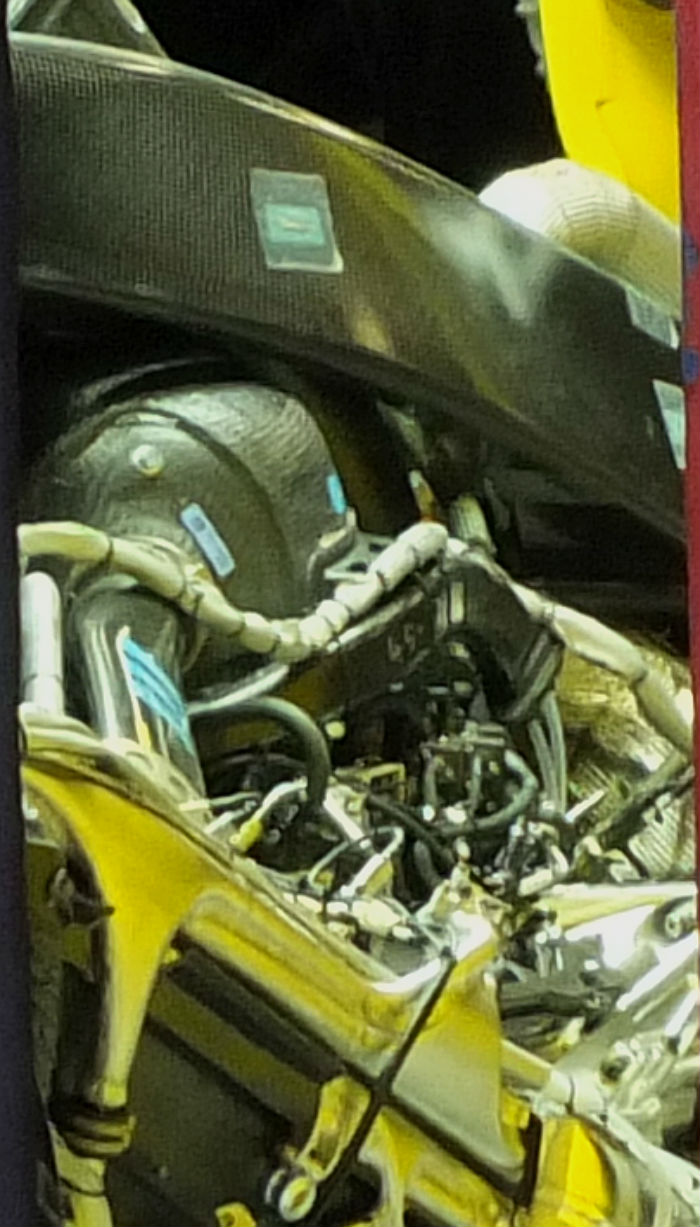
Looking at the 2016 Renault PU (here fitted to the RS16-above) and comparing it to the the 2015 unit (below) it is clear to see that the plenum has been redesigned, this also suggests that work has been carried out on the variable inlet system on the RE16.
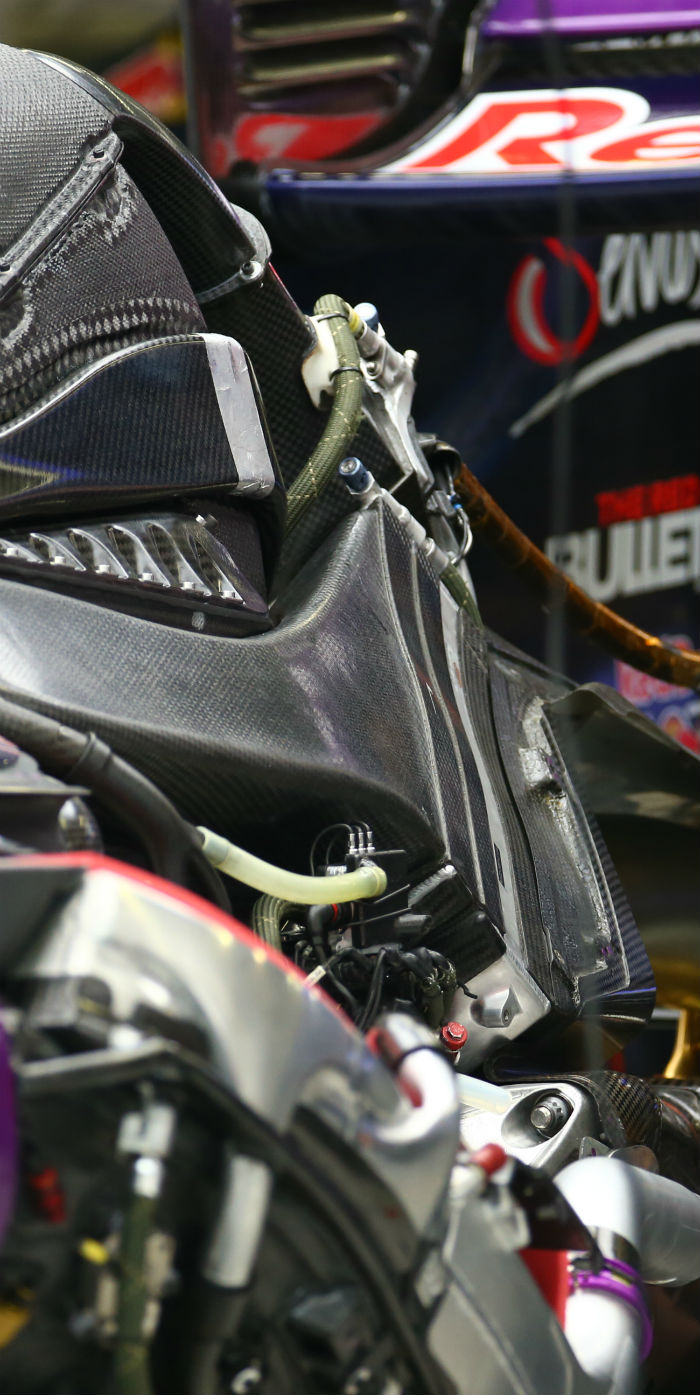
From the rear it is clear to see that the Red Bull has a twin wastegate exit and the Renault only a single, the Austrian-Thai owned team clear feeling that the twin exit brings an aerodynamic gain. Note the structure sat ontop of the rear impact structure where the rear suspension pick ups are. The blended wishbone/driveshafts are also clear to see.
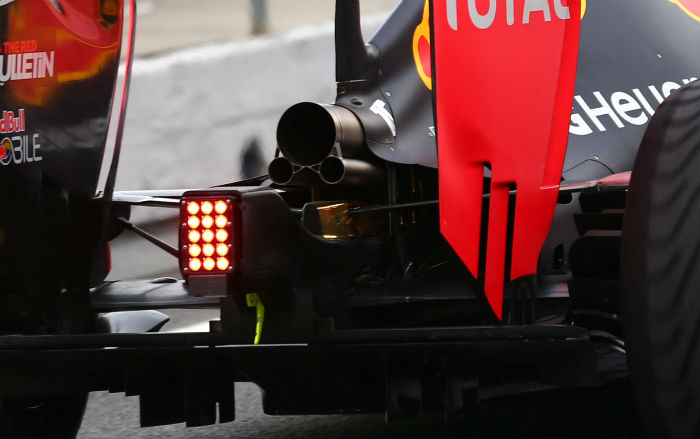
A look at the rear suspension on the RB12, once a again a pull rod design. Note the aerodynamic detailing on the rear of the floor.
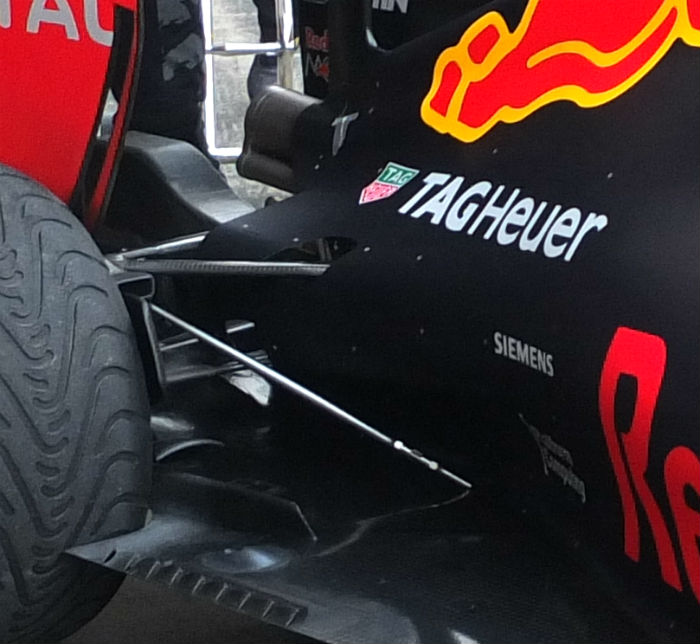
As much of the car is a carry over of concept in many areas it is very similar to the RB11. Nowhere is this clearer than around the roll hoop.
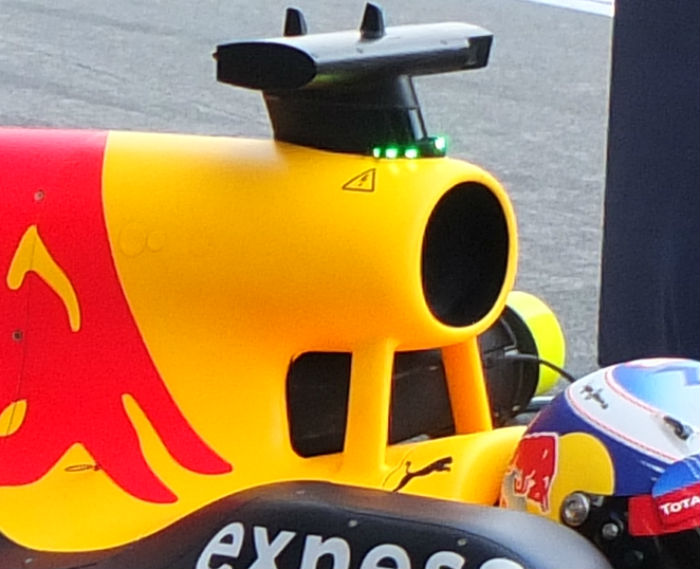
The 2016 roll hoop is almost identical in design and concept to that of the 2015 (below) with a cooling duct between the two support pylons. That 2011 design is itself a concept carry over from earlier cars.
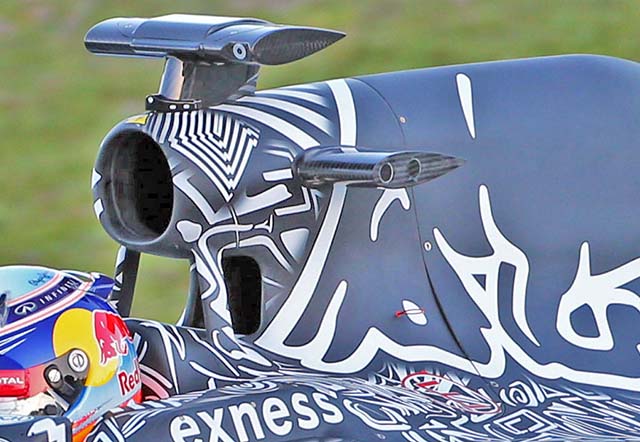
The 2014 RB10 hoop (below)
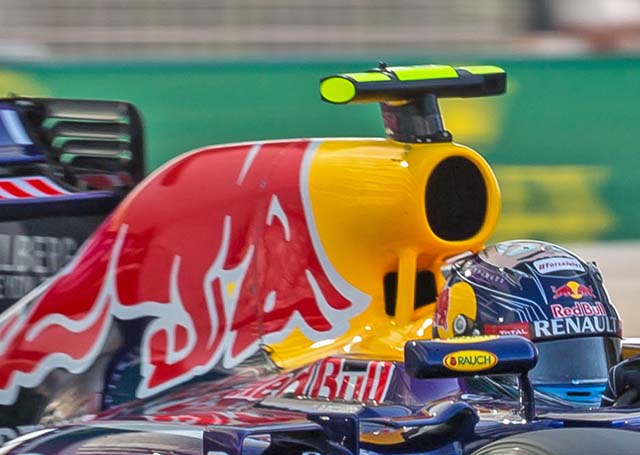
RB9 (below)
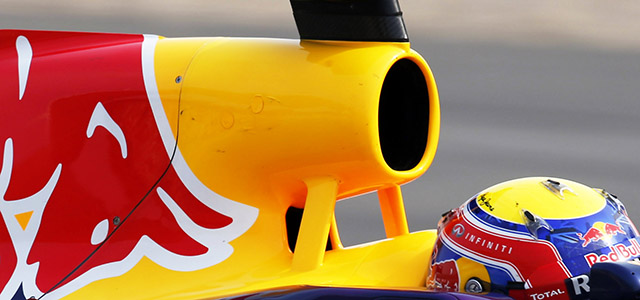
RB8(below)
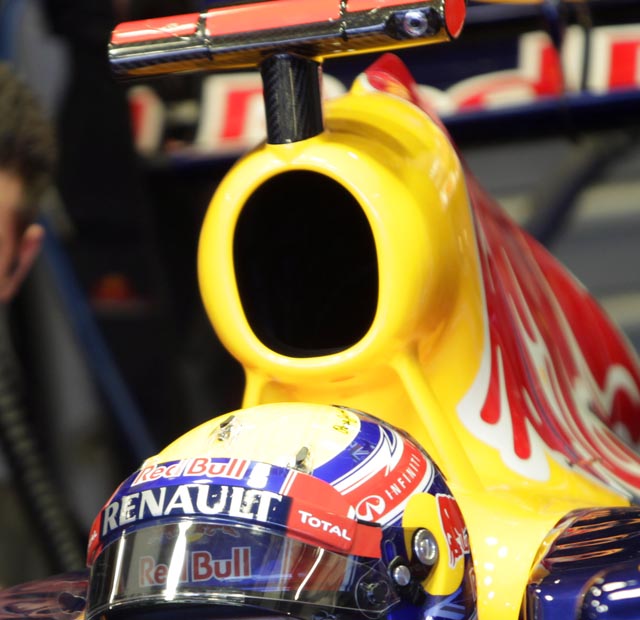
The nose of the car also exhibits much of the family traits of the RB11, something Adrian Newey would describe as part of the DNA of this line of cars. Probably.
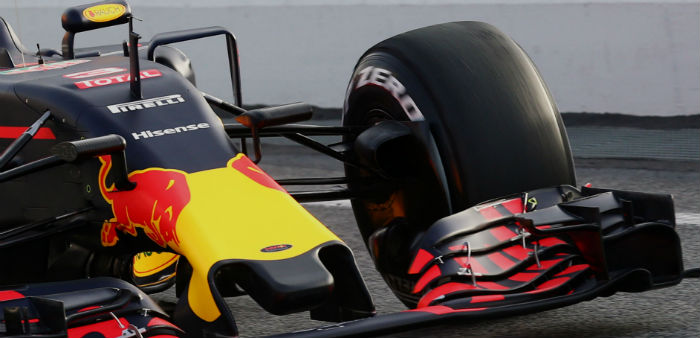
The similarities between the RB12 nose (above) and the RB11 (below) are substantial.
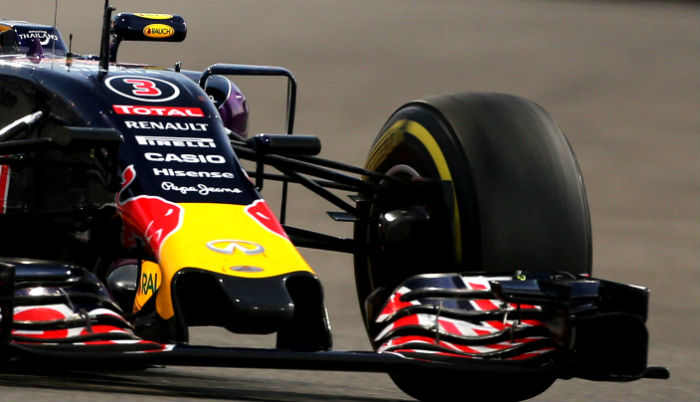
At times and with some new cars it becomes necessary to look at some parts of the chassis to work out if this is really a new car at all. The RB12 is one of these cases.

The RB12 features the mandatory higher cockpit sides required in 2016 (above) compare with the lower sides used last year (below)
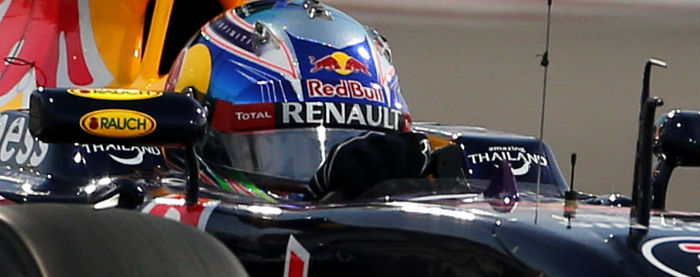
Red Bull fitted a new rear wing at Melbourne with an interesting leading edge with a long curved slot interlinking with the open ended vents at the top.
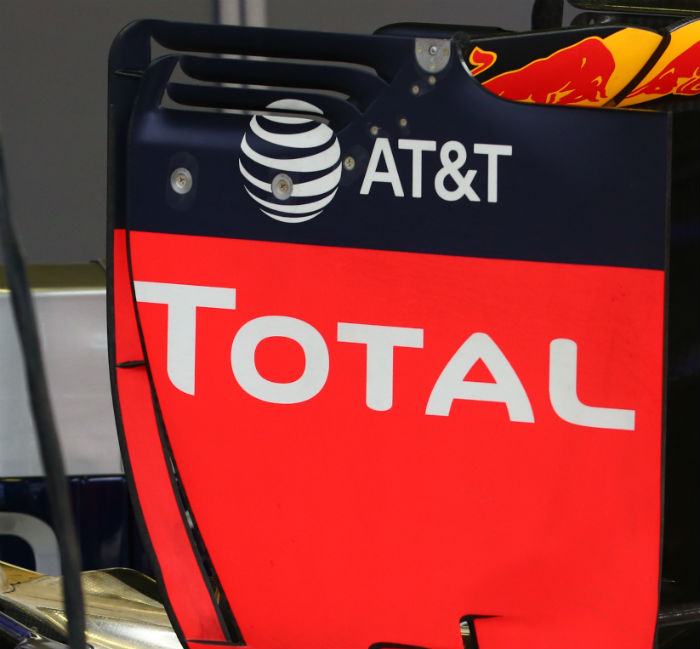
A look at the front bulkhead of the RB12. The third element is mounted on top of the the chassis between the pickup points if the pushrods. In this image the tops of the bellcranks can be seen as can the top of one of the damper shafts (RHS).
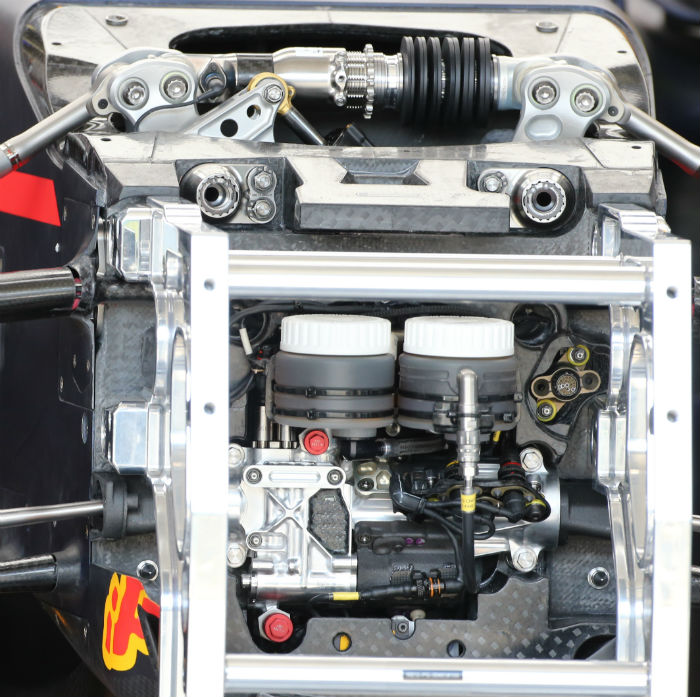
Interestingly there is no sign of the LHS damper suggesting that there is either an unconventional layout in this area or the overall design is not symmetrical (or is it a single damper layout?).
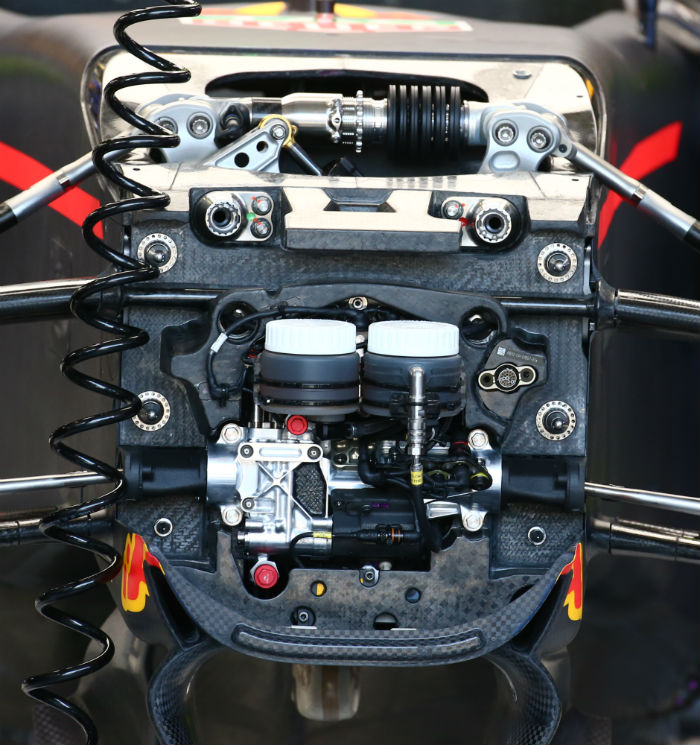
The torsion bars are clear to see as are the master cylinders. Note the low mounted steering rack also visible.
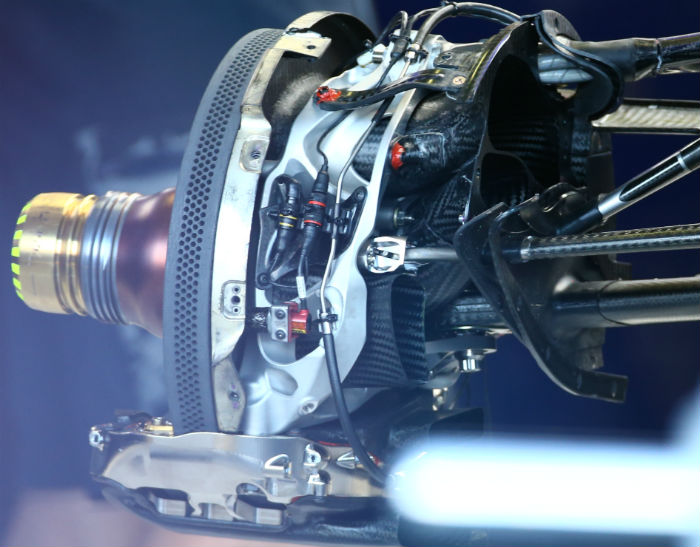
A look at the front brake setup of the Red Bull with some ducting removed. Note the brake caliper mounted at the base of the disc (above and below).
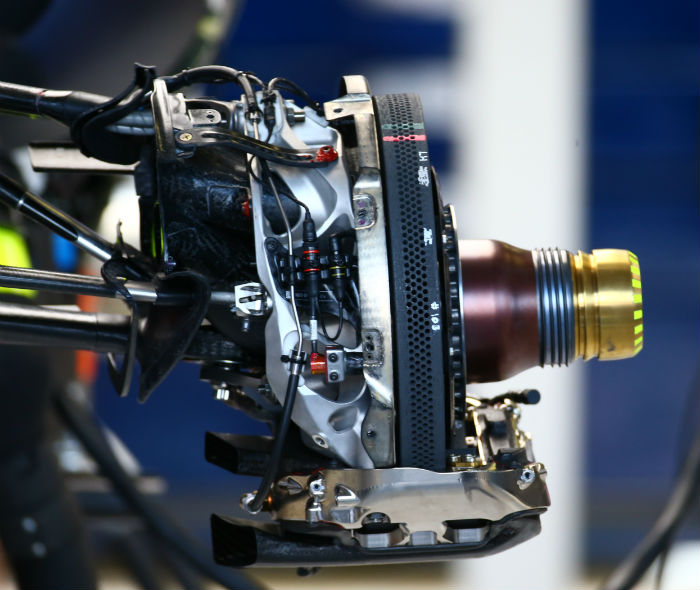
The power unit installation of the RB12 is similar to the RB11, but not the same. Note the intercooler in the sidepod (the RB12 appears to have one on either side of the car) and the componentry under the sidepod duct. The orange cabling denotes part of the high voltage (hybrid) circuit. The exhaust from the V6 engine is clear to see, also note the tailpipe and wastegate exit. The Y-lon rear wing support is obvious but note the Zircoflex gold thermal barrier on its inner faces.

The RB12 uses a composite transmission casing – note the inboard suspension mounting points.
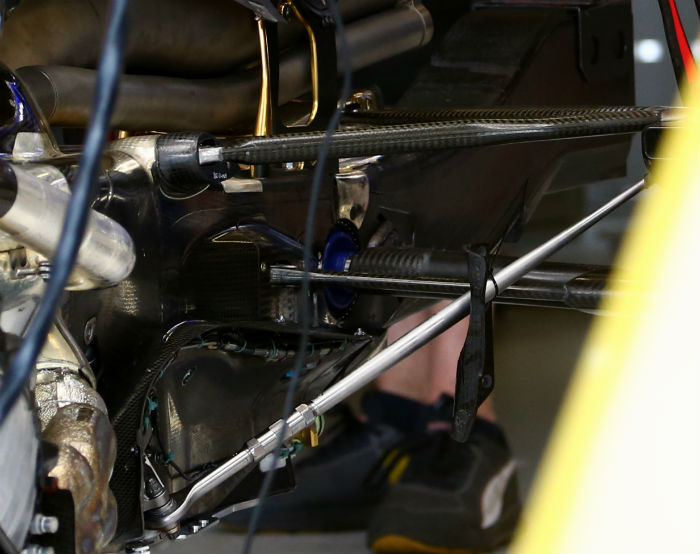
A closer look at the inboard front suspension components on the Red Bull, the central element appears to be fitted with carbon bellow springs of the type developed by Hyperco. The torsion bar position and location is clear to see.
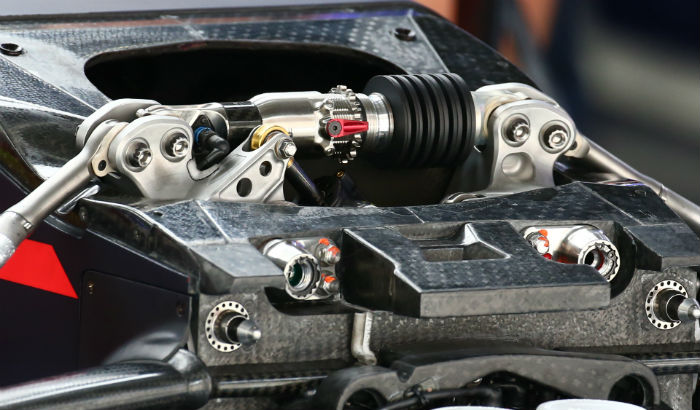
The front wing of the Red Bull has six elements not including the forward winglets.
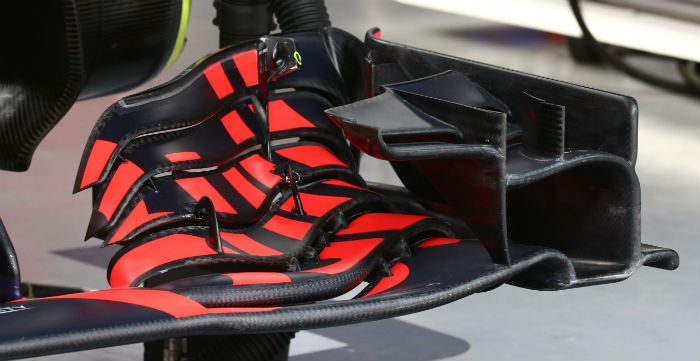
This may not be a new development but it is a good example of the level of aerodynamic sophistication and complexity of the current generation of car.
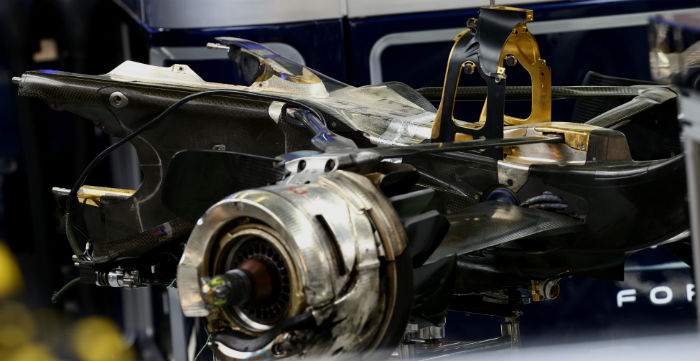
A look at the composite case transmission on the Red Bull, the shape of the upper part of the case is concave and quite sculpted. Note the cut outs on the forward edge of the case, the turbine is mounted in the bell housing (although there is not a separate bellhousing), so these cut outs are to allow the exhaust pipes to get to the turbine, and then for the tail pipe to exit through the top of the case (as can be seen below).

The Red Bull features a blended lower front wishbone, as a number of cars do in 2016. This is done purely for aerodynamic reasons.
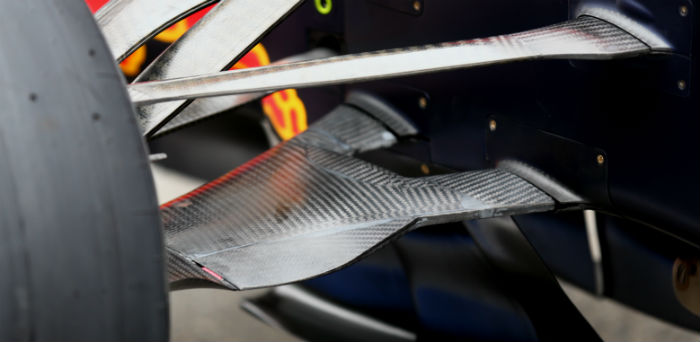
A nice look under the nose of the Red Bull. The central section is the front impact structure note how the paint has worn away on the trailing edge of one side. It may be that this is a worn out component being used for pitstop practice only. The tiny (considering the loads) front wing mounting holes can be seen. This arrangement is rather similar to that of some Ikea furniture with a cam lock securing the wing.
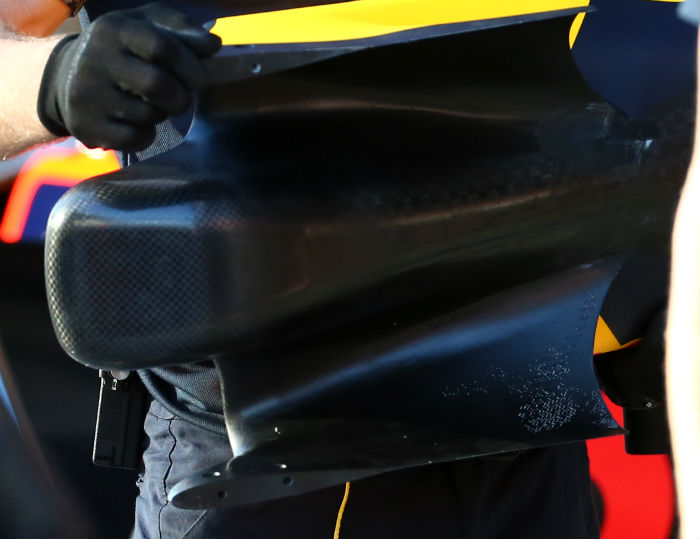
Another unusual view of the Red Bull nose showing its inner face. The 8STA type connector on the nose is likely to be for the harness relating to sensors in the nose cone and around the front wing.
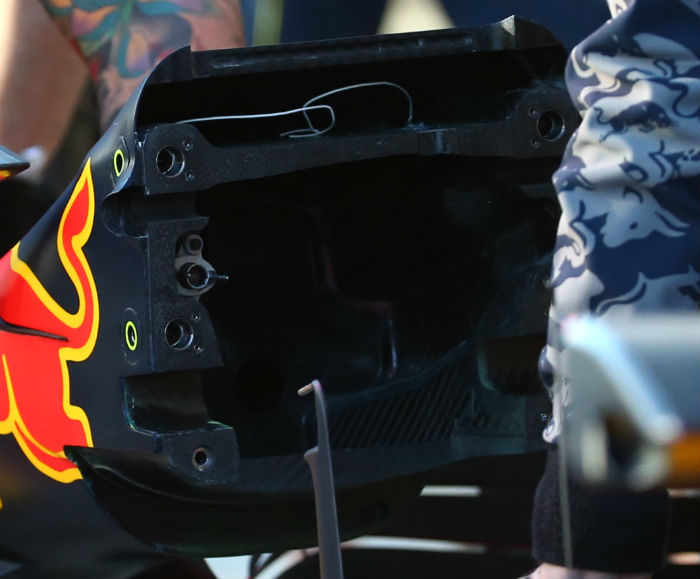
A look at one of the RB12 chassis being prepared in Barcelona (below)
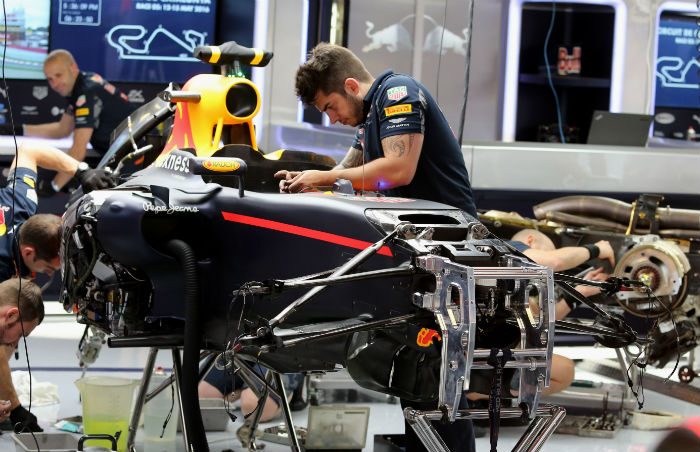
Another view of the RB12 transmission, the inboard rear pullrod pick up point can be seen.
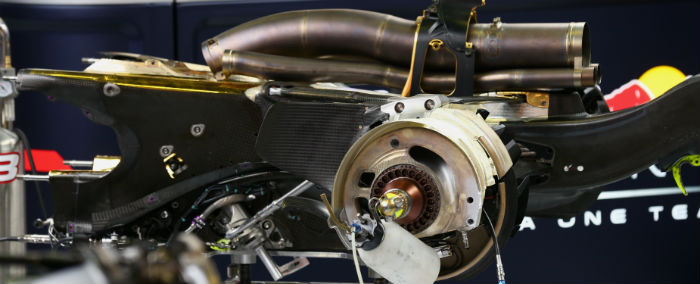
Renault introduced a new specification power unit at Monaco with most of the upgrade aimed at improving the ICE side of the unit with combustion a particular focus. Only two units were available one each of the works team and Red Bull racing, but in the hands of the latter it took pole position, the first for both Renault and Red Bull since 2013. “It’s an improvement on driveability and an improvement on power and it performed faultlessly through the test|” Nick Chester of Renault adds. The new unit is, according to some within Renault, worth as much as half a second a lap.
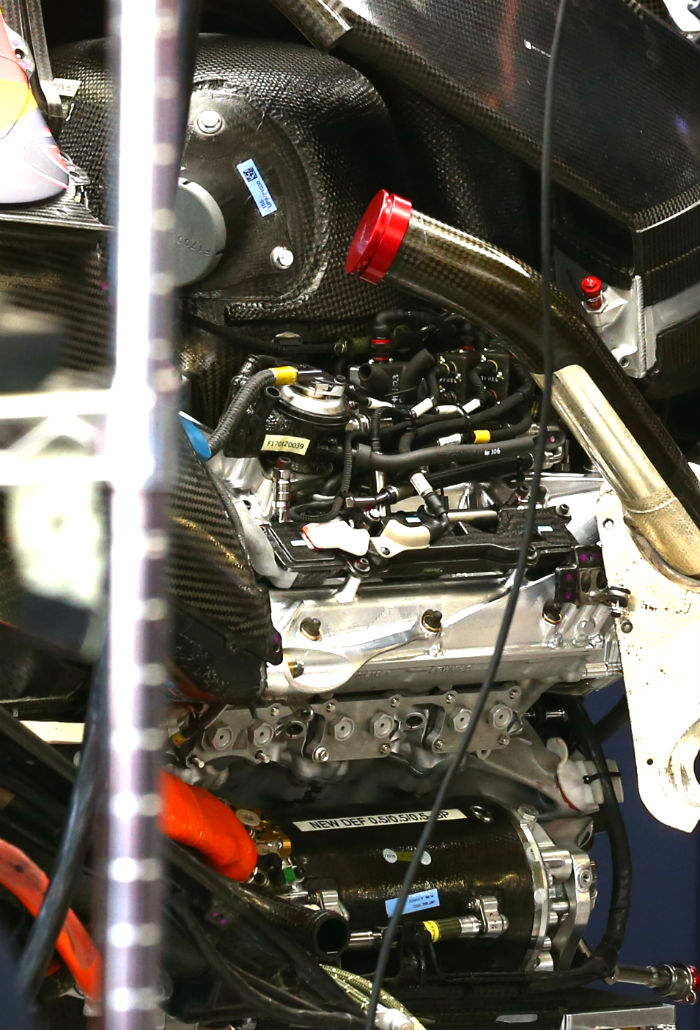
Here we can see the new ‘B’ specification V6 motor (or moteur if you feel a bit French), the exhaust has been removed, and the MGU-K made by Marelli is clear to see, the overall design
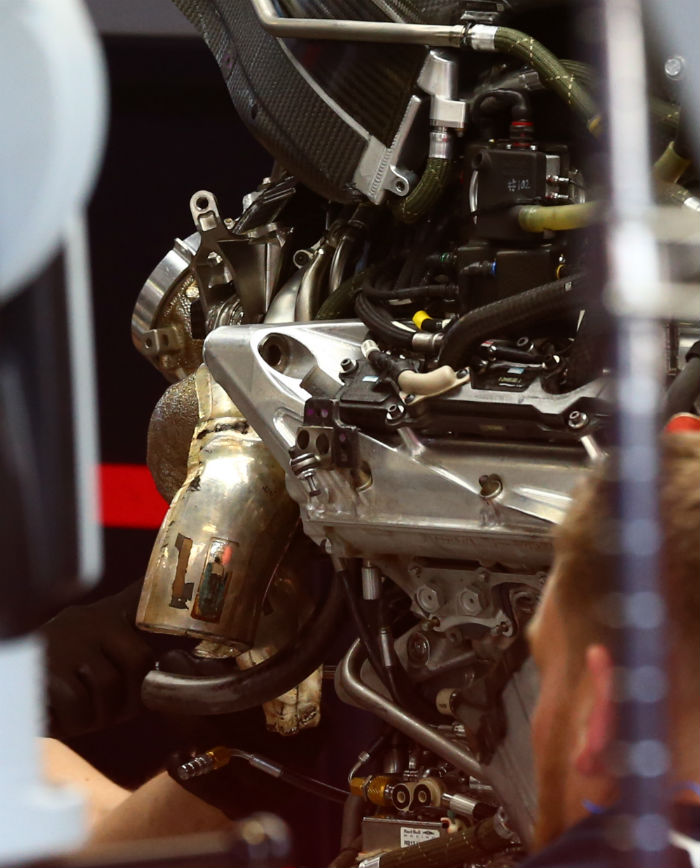
The old ‘A’ specification V6 was used on the other team car driven by a less experienced driver (above)
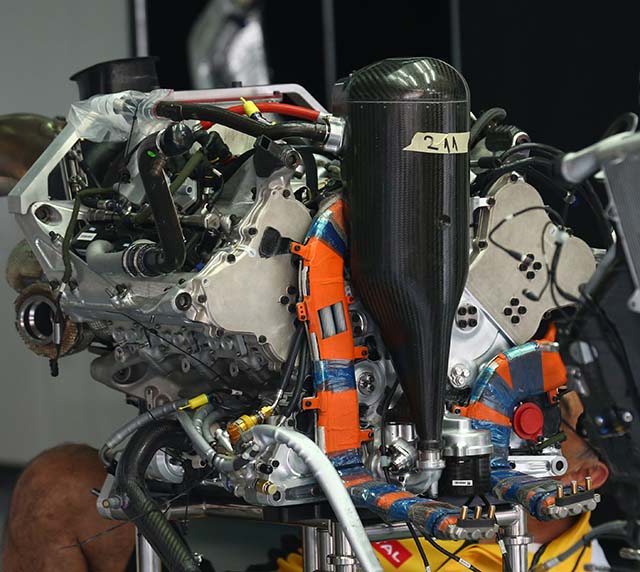
Here just for the sake of comparison is the 2014 Renault RS34 V6

A look at the installation of the Renault engine (old A spec) in the back of the Red Bull, it is barely visible with all the heat shields installed. The side of the charge air cooler is visible in this shot.
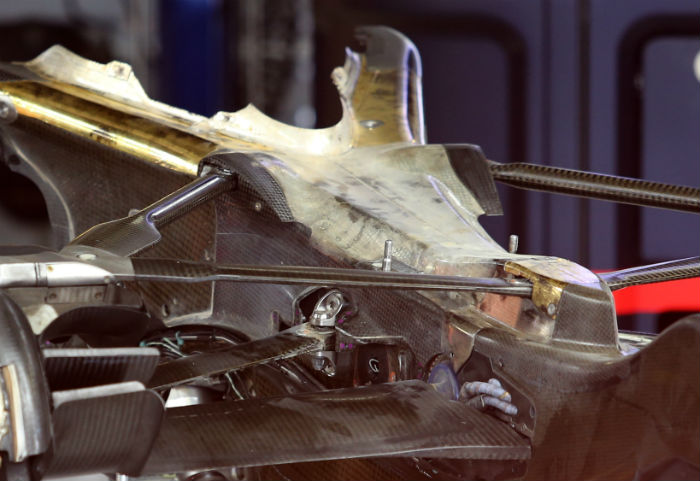
Another look at the gearbox casing of the Red Bull, note the extensions used to mount the inboard suspension pick ups. The blended driveshaft and wishbone is clear to see



